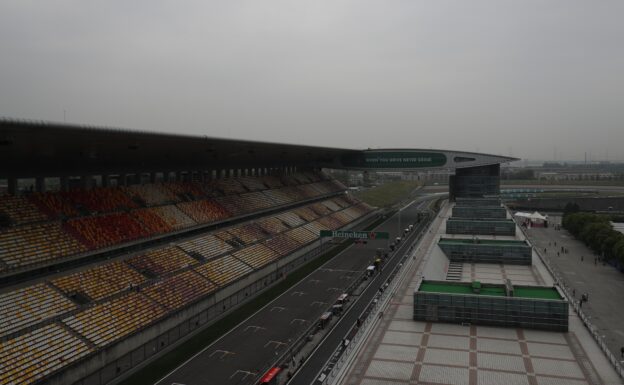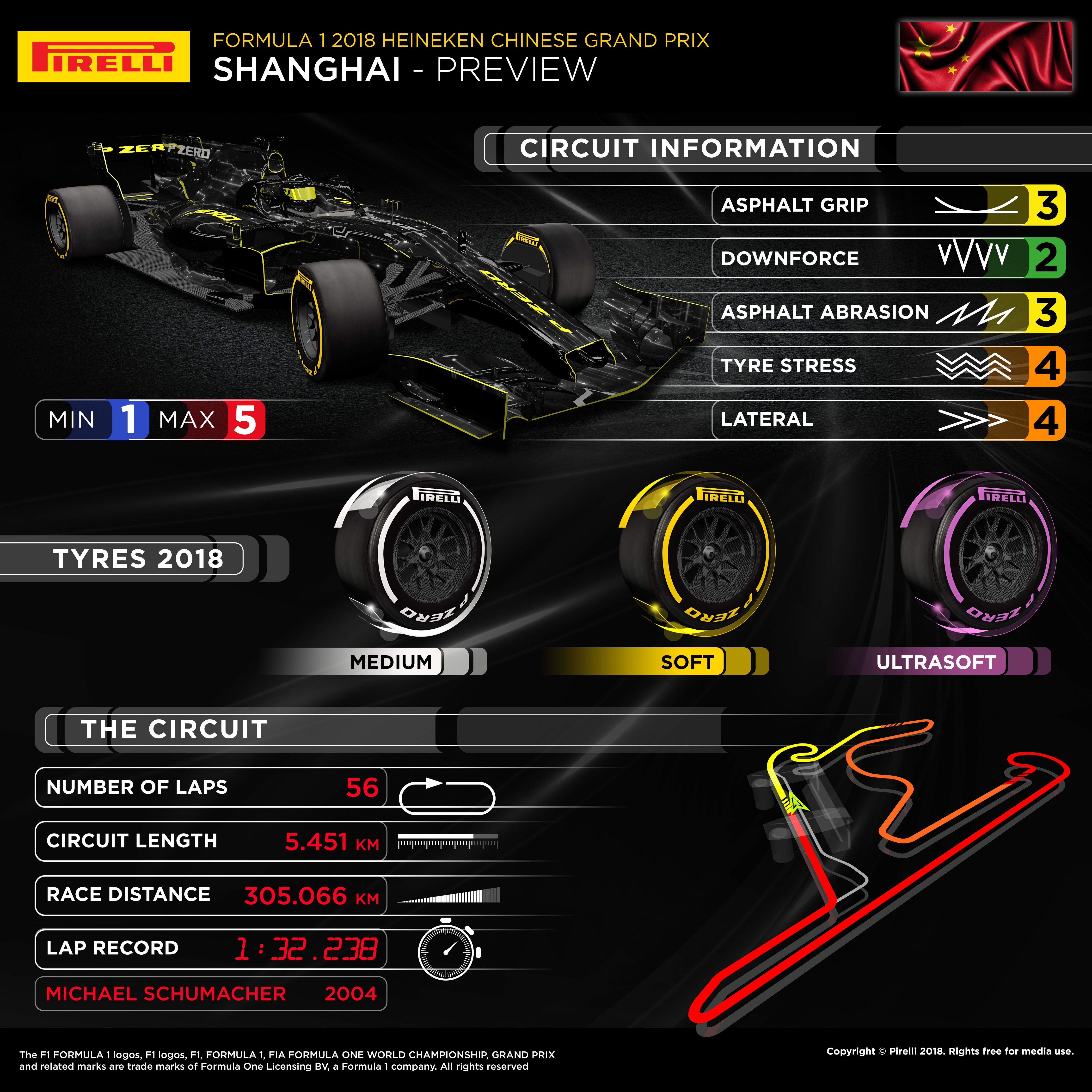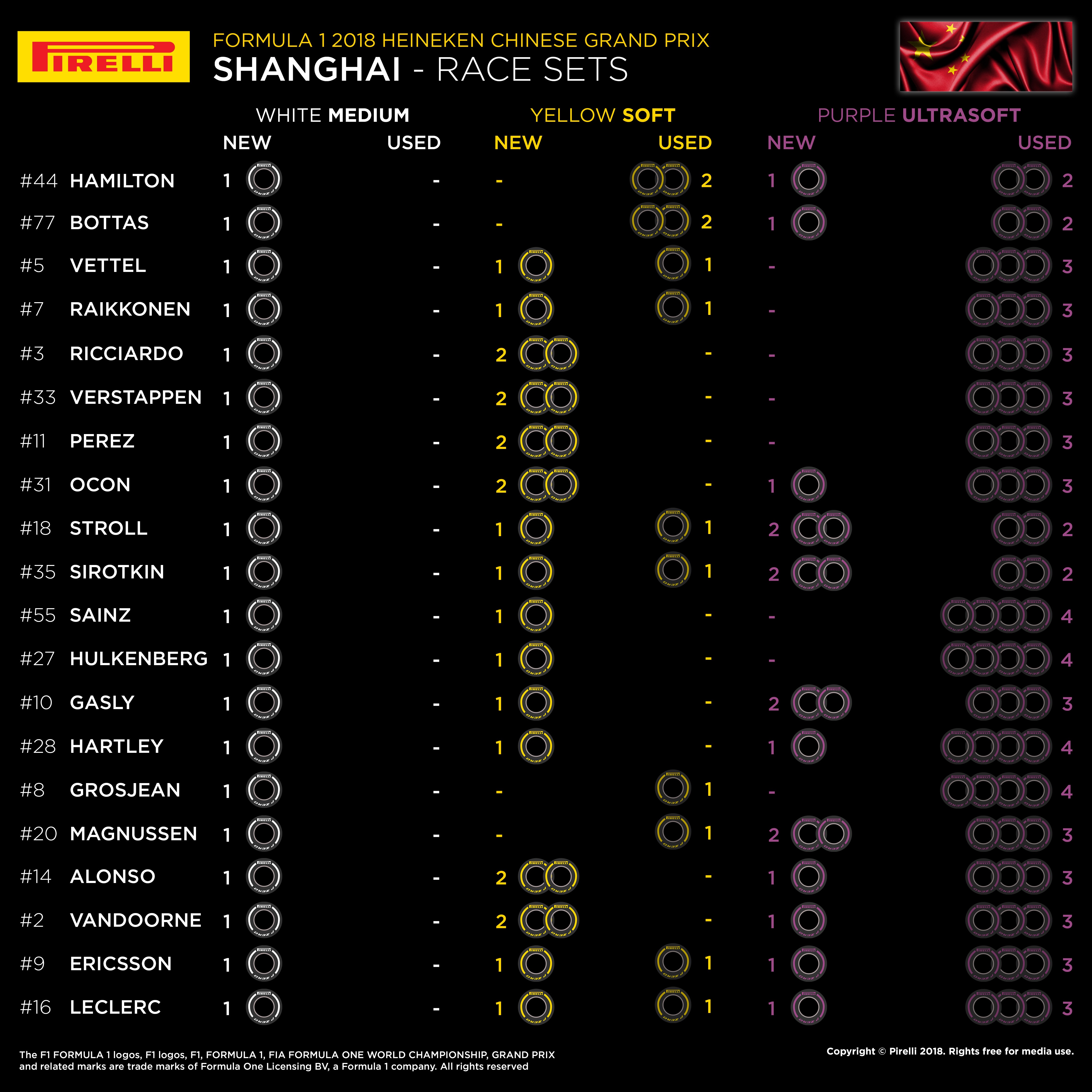Starting Grid 2018 Chinese F1 GP

Event: Chinese Grand Prix
Track: Shanghai International Circuit
F1 Grid 2018 Chinese GP
| Pos | No | Driver | Team | Lap Time | 1st Gap |
| 1 | 5 | Sebastian Vettel | Ferrari | 1:31,095 | |
| 2 | 7 | Kimi Räikkönen | Ferrari | 1:31,182 | 0,087 |
| 3 | 77 | Valtteri Bottas | Mercedes | 1:31,625 | 0,530 |
| 4 | 44 | Lewis Hamilton | Mercedes | 1:31,675 | 0,580 |
| 5 | 33 | Max Verstappen | Red Bull | 1:31,796 | 0,701 |
| 6 | 3 | Daniel Ricciardo | Red Bull | 1:31,948 | 0,853 |
| 7 | 27 | Nico Hülkenberg | Renault | 1:32,532 | 1,437 |
| 8 | 11 | Sergio Pérez | Force India | 1:32,758 | 1,663 |
| 9 | 55 | Carlos Sainz | Renault | 1:32,819 | 1,724 |
| 10 | 8 | Romain Grosjean | Haas | 1:32,855 | 1,760 |
| 11 | 20 | Kevin Magnussen | Haas | 1:32,986 | 1,891 |
| 12 | 31 | Esteban Ocon | Force India | 1:33,057 | 1,962 |
| 13 | 14 | Fernando Alonso | McLaren | 1:33,232 | 2,137 |
| 14 | 2 | Stoffel Vandoorne | McLaren | 1:33,505 | 2,410 |
| 15 | 28 | Brendon Hartley | Toro Rosso | 1:33,795 | 2,700 |
| 16 | 35 | Sergey Sirotkin | Williams | 1:34,062 | 2,967 |
| 17 | 10 | Pierre Gasly | Toro Rosso | 1:34,101 | 3,006 |
| 18 | 18 | Lance Stroll | Williams | 1:34,285 | 3,190 |
| 19 | 16 | Charles Leclerc | Sauber | 1:34,454 | 3,359 |
| 20 | 9 | Marcus Ericsson | Sauber | 1:34,914 | 3,819 |
Note - Ericsson penalised five grid places for ignoring yellow flags in qualifying, but was already last.
2018 Chinese Grand Prix Tyre Compounds
The season’s third race presents the first nomination of the year with a gap between the selected compounds – medium, soft and ultrasoft – and in China there’s always a chance of the Cinturato wet weather tyres appearing as well. The Shanghai circuit offers a roughly equal mix of straights and corners, with the corners themselves additionally offering a wide range of speeds and radii. It’s one of the races where strategy has often made a particular difference in the past.
The circuit from a tyre point of view
- Turns 1 and 13 are the most demanding corners for tyres. Turn 1 is a decreasing radius
corner leading straight into Turn 2, while the long Turn 13 is taken at high speed. - There’s a very long straight that can have the effect of cooling the tyres, meaning that drivers
need to pay attention to the braking area: this is also a key opportunity for overtaking. - The circuit isn’t used much during the year, which can make it quite ‘green’ and slippery.
- The 2017 strategy was influenced by rain and safety cars. Lewis Hamilton won with a twostopper,
starting on the intermediate and then completing two stints on the soft. - It’s quite a fast and flowing circuit, with lateral forces (cornering) more predominant than
longitudinal forces (acceleration and braking). - In cold weather, some graining has been observed in the past: especially in free practice.
- The surface is quite smooth, making it easier to find a consistent set up: the main challenge
is to identify the best compromise between downforce and drag to find the right wing level.
Here you can see the tyres each driver has used and which tyres they can choose for tomorrow's race.
✅ Check out more posts with related topics:













Last 3 commented posts